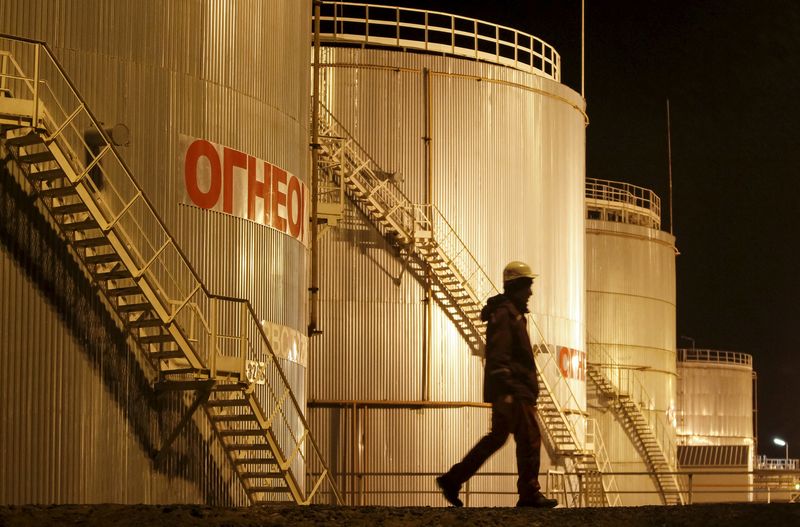5 big analyst AI moves: Apple lifted to Buy, AI chip bets reassessed
Investing.com -- Oil prices slipped lower Tuesday, continuing recent losses as traders fretted over increased production and deteriorating demand amid increased global economic headwinds.
At 08:05 ET (12:05 GMT), Brent oil futures for September fell 0.8% to $68.21 a barrel and West Texas Intermediate crude futures fell 1% to $65.65 a barrel.
Both contracts fell by more than 1% on Monday to settle at their lowest in a week.
Oil battered by oversupply concerns, demand fears
The Organization of Petroleum Exporting Countries and allies, a group known as OPEC+, over the weekend agreed to hike production by 547,000 barrel per day for a second consecutive month.
The move was the latest in a series of production hikes by the cartel this year, as it seeks to unwind production cuts over the past three years, while also reclaiming a greater share of the oil market.
The OPEC+ hike points to increased supply in the coming months, despite concerns over deteriorating demand as global economic growth cools.
Weak nonfarm payrolls data from the U.S. was a major point of concern for oil markets, as they feared a demand slowdown in the world’s biggest fuel consumer. The data added to uncertainty over the U.S. economy, especially as markets feared the impact of U.S. President Donald Trump’s trade tariffs.
Dismal purchasing managers index data from top oil importer China also weighed on oil last week, as the country logged a bigger-than-expected contraction in manufacturing activity.
Russia oil buyer sanctions in focus
Still, oil marked some gains last week after Trump threatened to impose even more severe sanctions on Russian oil in an attempt to coax Moscow to end the country’s long-running war with Ukraine.
Trump had recently threatened to tariff Russia’s biggest oil buyers – China and India.
The U.S. president last week slapped a 25% tariff on India, and warned of a bigger penalty if the South Asian country did not immediately cease its buying of Russian crude.
Trump repeated this threat on Monday.
"This puts in the region of 1.7m b/d of supply at risk if Indian refiners stop buying Russian oil," said analysts at ING, in a note. "If there are no other willing buyers for this oil, it would erase the expected surplus through the fourth quarter and 2026. It would also possibly provide OPEC+ the opportunity to start unwinding the next tranche of supply cuts totalling 1.66m b/d."
"Less has been said about the flow of Russian oil to China. If the U.S. successfully targets these flows as well, it will leave the market considerably tighter and require OPEC+ to tap even deeper into its spare production capacity."
Ambar Warrick contributed to this article
